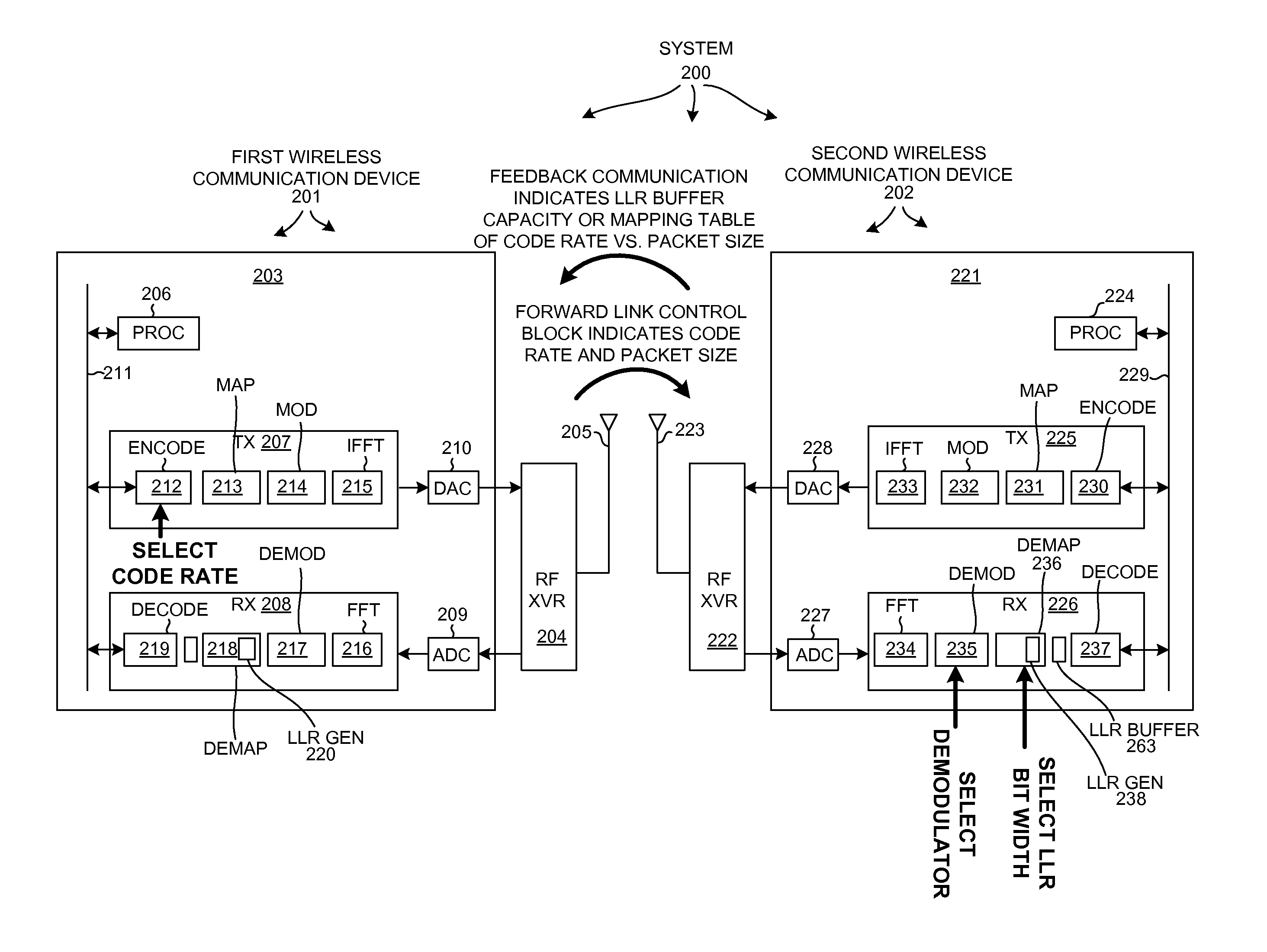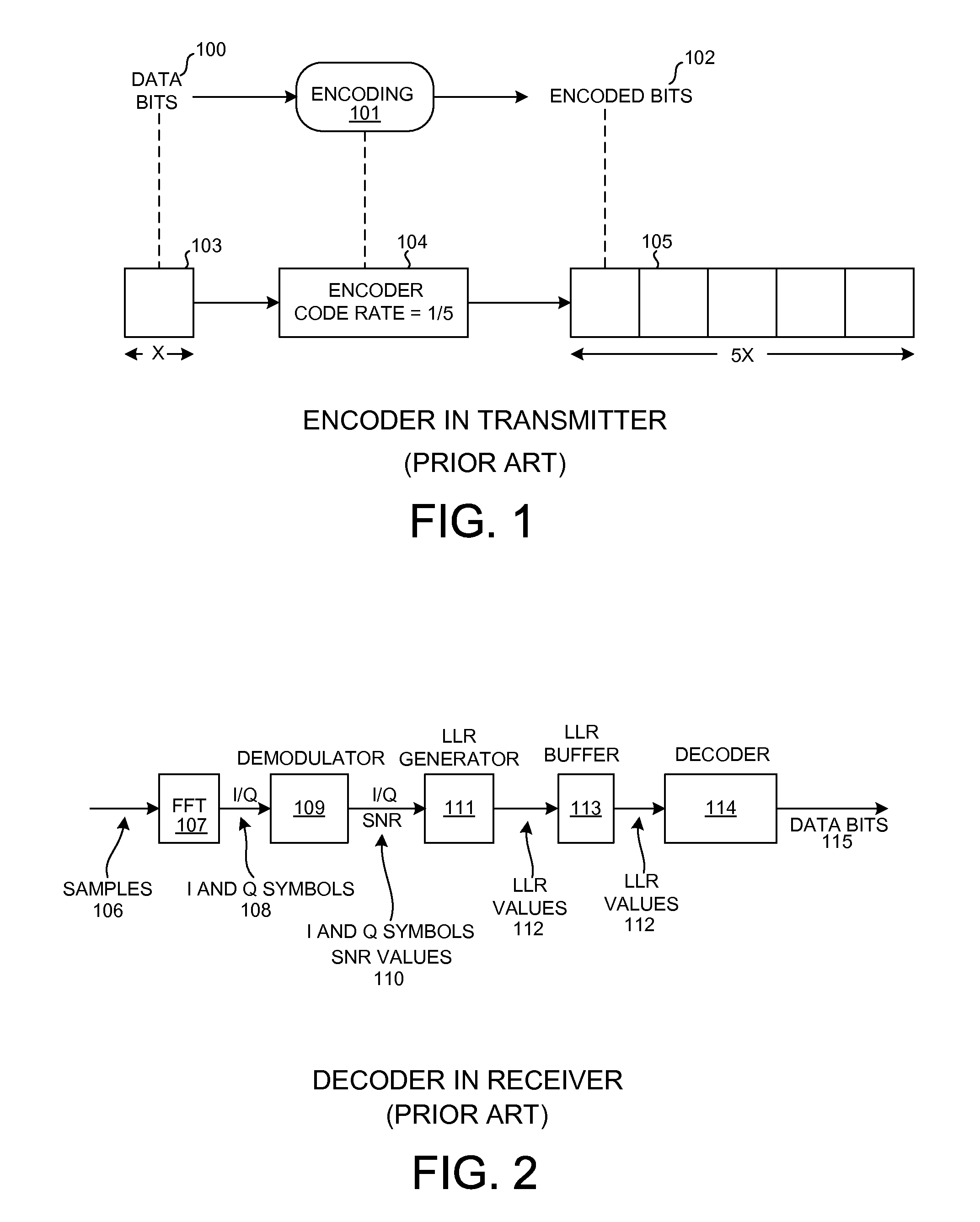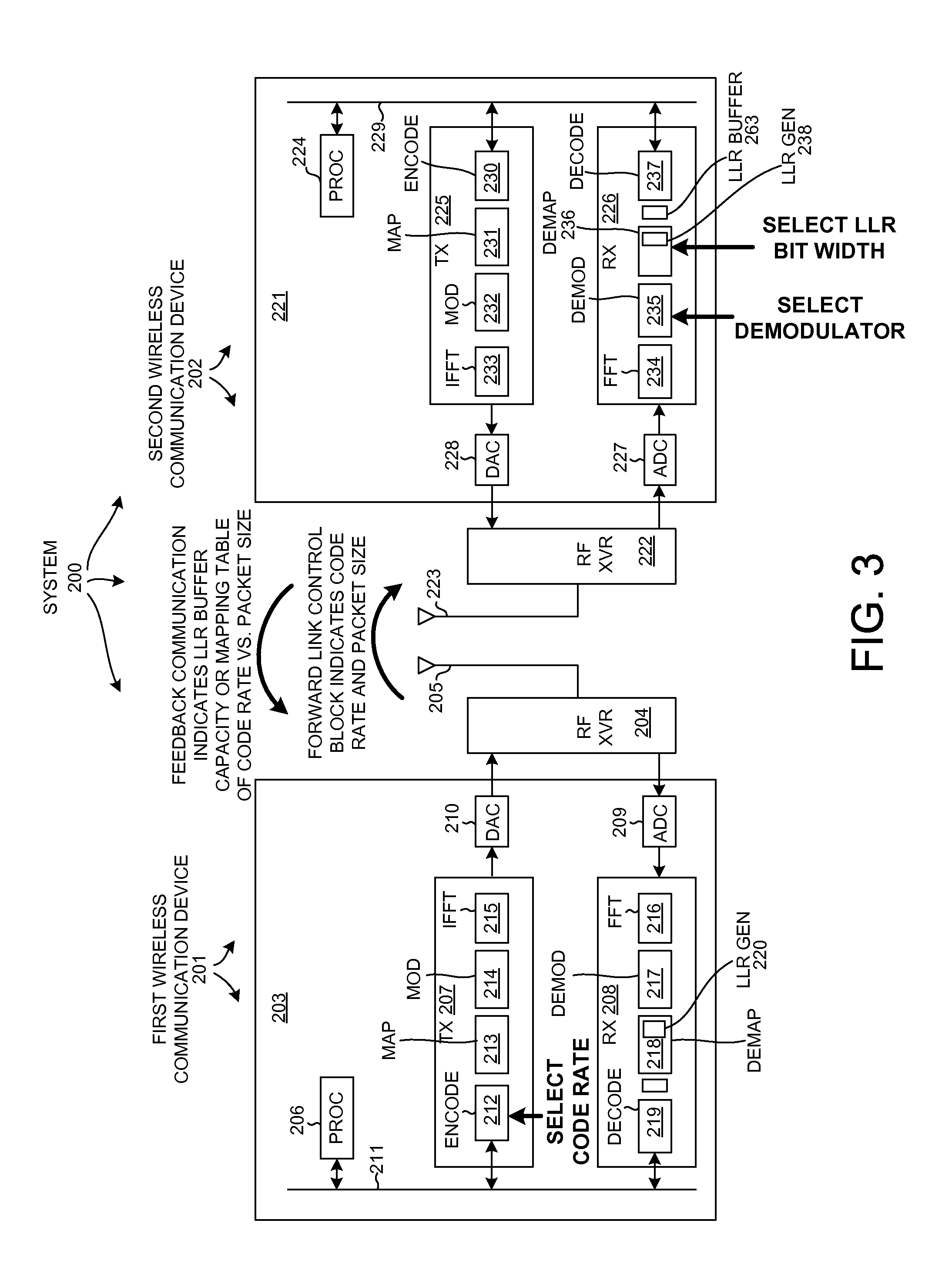Method and System for LLR Buffer Reduction in a Wireless Communication Modem
a wireless communication modem and buffer reduction technology, applied in amplitude demodulation, coding, code conversion, etc., can solve the problems of high implementation complexity and high power consumption of high-performance demodulators such as maximum likelihood demodulators for 16 qam, 64 qam and 256 qam, so as to reduce the amount of llr buffer memory required, prevent the excess of llr buffer memory capacity, and improve performance.
- Summary
- Abstract
- Description
- Claims
- Application Information
AI Technical Summary
Benefits of technology
Problems solved by technology
Method used
Image
Examples
Embodiment Construction
[0028]FIG. 3 is a simplified high level block diagram of a system 200 involving a first wireless communication device 201 and a second wireless communication device 202. Wireless communication devices 201 and 202 may, for example, be a base station and a cellular telephone. First wireless communication device 201 includes a digital baseband integrated circuit 203, a radio-frequency transceiver integrated circuit (RF XVR) 204 and an antenna 205. Digital baseband integrated circuit 203 includes a processing circuit 206, a transmit channel (TX) 207, a receive channel (RX) 208, an Analog-to-Digital Converter (ADC) 209, a Digital-to-Analog Converter (DAC) 210, and a bus 211. Transmit channel 207 includes an encoder circuit (ENCODE) 212, a map circuit (MAP) 213, a modulator circuit (MOD) 214, and an Inverse Fast Fourier Transform circuit (IFFT) 215. Receive channel 208 includes a Fast Fourier Transform circuit (FFT) 216, a demodulator circuit (DEMOD) 217, a demap circuit (DEMAP) 218, and ...
PUM
 Login to View More
Login to View More Abstract
Description
Claims
Application Information
 Login to View More
Login to View More - R&D
- Intellectual Property
- Life Sciences
- Materials
- Tech Scout
- Unparalleled Data Quality
- Higher Quality Content
- 60% Fewer Hallucinations
Browse by: Latest US Patents, China's latest patents, Technical Efficacy Thesaurus, Application Domain, Technology Topic, Popular Technical Reports.
© 2025 PatSnap. All rights reserved.Legal|Privacy policy|Modern Slavery Act Transparency Statement|Sitemap|About US| Contact US: help@patsnap.com



